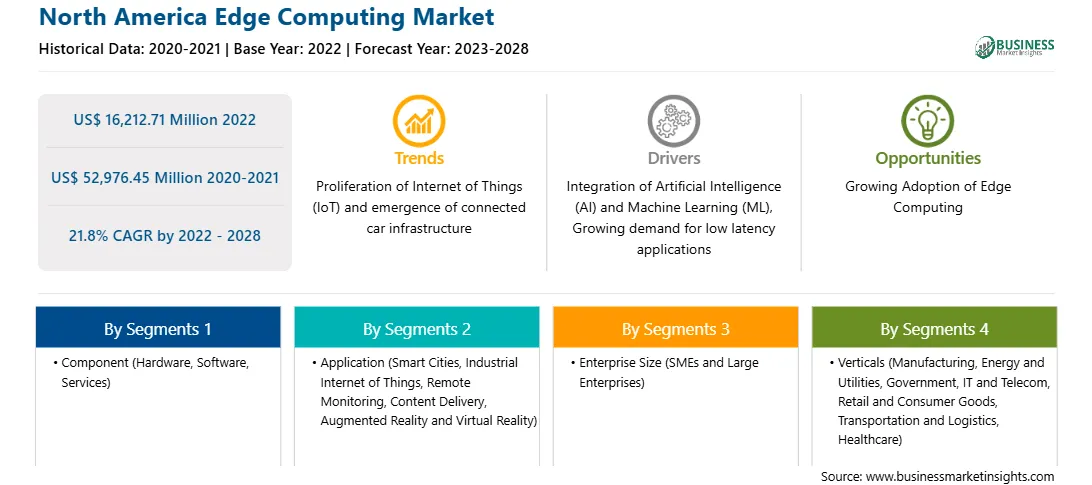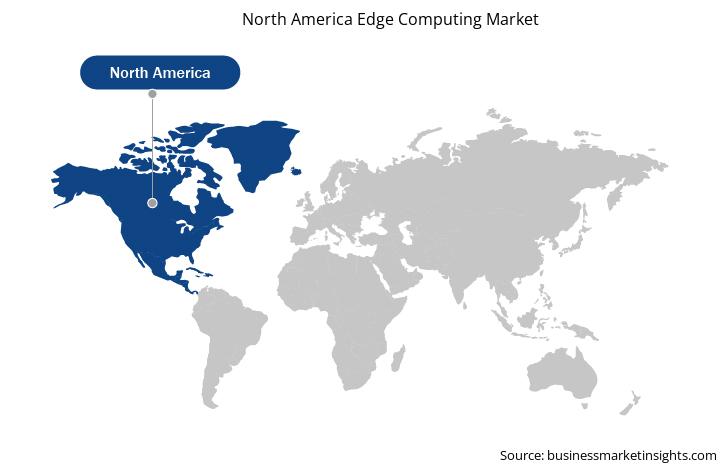Edge computing works with a highly distributed network which eliminates the round trip to the cloud, reducing latency and offers real-time responsiveness. Acceleration in data transmission has become an important business goal. Many applications require low latency to improve the user experience and support customer satisfaction by helping applications run faster and smoothly. Such applications include online meetings and mission-critical computation applications hosted on the cloud. Improving latency may be a matter of making small improvements and compiling time savings in various application such as healthcare, air traffic control, combat situation and among other applications, which provides meaningful improvements in network performance. Low latency provides a reliable and robust connection, reducing connection loss, delay, lags, and buffers. It is critical for many businesses and industries that rely on real-time applications or live streaming, including banking, diagnostic imaging, navigation, stock trading, weather forecasting, collaboration, research, ticket sales, video broadcasting, and online gaming. Thus, low latency improves the operation speed at the edge, enabling the demand for edge computing.
Bandwidth is the amount of data that a network can carry over time. All networks have limited bandwidth, and wireless communication limits are severe. It is possible to increase network bandwidth to accommodate a large number of devices and data. Edge computing distributes data computation through the use of on-premise smart devices. It makes the data processing efficient by reducing bandwidth and improving response times. Thus, the less consumption of bandwidth can lead to reduced data transmission costs. Hence, extremely low latency and high bandwidth availability increase the adoption of edge computing over various applications, bolstering the edge computing market growth.
The US, Canada, and Mexico are the major economies in North America. The availability of high-speed connectivity, increase in cloud adoption, a surge in connected devices driving the growth of IoT, and rapidly emerging 5G technology are the key factors contributing to the growth of the edge computing market. The impact of deploying sensors and using data to make actionable decisions can vary based on the use case. The IoT—Spring 2022 report, released in May 2022, states that the market for the Internet of Things is expected to grow by 18% to reach 14.4 million active connections. Further, the number of connected IoT devices is expected to reach 27 million by 2025. With more IoT devices connected, the adoption of edge computing solutions would also grow in North America in the coming years.
Strategic insights for the North America Edge Computing provides data-driven analysis of the industry landscape, including current trends, key players, and regional nuances. These insights offer actionable recommendations, enabling readers to differentiate themselves from competitors by identifying untapped segments or developing unique value propositions. Leveraging data analytics, these insights help industry players anticipate the market shifts, whether investors, manufacturers, or other stakeholders. A future-oriented perspective is essential, helping stakeholders anticipate market shifts and position themselves for long-term success in this dynamic region. Ultimately, effective strategic insights empower readers to make informed decisions that drive profitability and achieve their business objectives within the market. The geographic scope of the North America Edge Computing refers to the specific areas in which a business operates and competes. Understanding local distinctions, such as diverse consumer preferences (e.g., demand for specific plug types or battery backup durations), varying economic conditions, and regulatory environments, is crucial for tailoring strategies to specific markets. Businesses can expand their reach by identifying underserved areas or adapting their offerings to meet local demands. A clear market focus allows for more effective resource allocation, targeted marketing campaigns, and better positioning against local competitors, ultimately driving growth in those targeted areas.North America Edge Computing Strategic Insights

North America Edge Computing Report Scope
Report Attribute
Details
Market size in 2022
US$ 16,212.71 Million
Market Size by 2028
US$ 52,976.45 Million
Global CAGR (2022 - 2028)
21.8%
Historical Data
2020-2021
Forecast period
2023-2028
Segments Covered
By Component
By Application
By Enterprise Size
By Verticals
Regions and Countries Covered
North America
Market leaders and key company profiles
North America Edge Computing Regional Insights

North America Edge Computing Market Segmentation
The North America edge computing market is segmented into component, applications, enterprise size, verticals, and country.
Based on component, the North America edge computing market is segmented into hardware, software, and services. The hardware segment registered the largest North America edge computing market share in 2022.
Based on organization Size, the North America edge computing market is segmented into SMEs and large enterprises. The large enterprises segment held a larger North America edge computing market share in 2022.
Based on application, the North America edge computing market is segmented into smart cities, industrial internet of things (IIOT), remote monitoring, content delivery, augmented reality and virtual reality, and others. The smart cities segment held the largest North America edge computing market share in 2022.
Based on verticals, the North America edge computing market is segmented into manufacturing, energy and utilities, government, IT and telecom, retail and consumer goods, transportation and logistics, healthcare, and others. The IT and telecom segment held the largest North America edge computing market share in 2022.
Based on country, the North America edge computing market has been categorized into the US, Canada, and Mexico. The US dominated the North America edge computing market in 2022.
ADLINK Technology Inc; Amazon Web Services; Dell Technologies; EdgeConnex Inc.; FogHorn Systems; IBM Corporation; Litmus Automation, Inc; Microsoft Corporation; Hewlett Packard Enterprise Development LP (HPE); and Vapor IO, Inc are some of the leading companies operating in the North America edge computing market.
The North America Edge Computing Market is valued at US$ 16,212.71 Million in 2022, it is projected to reach US$ 52,976.45 Million by 2028.
As per our report North America Edge Computing Market, the market size is valued at US$ 16,212.71 Million in 2022, projecting it to reach US$ 52,976.45 Million by 2028. This translates to a CAGR of approximately 21.8% during the forecast period.
The North America Edge Computing Market report typically cover these key segments-
The historic period, base year, and forecast period can vary slightly depending on the specific market research report. However, for the North America Edge Computing Market report:
The North America Edge Computing Market is populated by several key players, each contributing to its growth and innovation. Some of the major players include:
The North America Edge Computing Market report is valuable for diverse stakeholders, including:
Essentially, anyone involved in or considering involvement in the North America Edge Computing Market value chain can benefit from the information contained in a comprehensive market report.